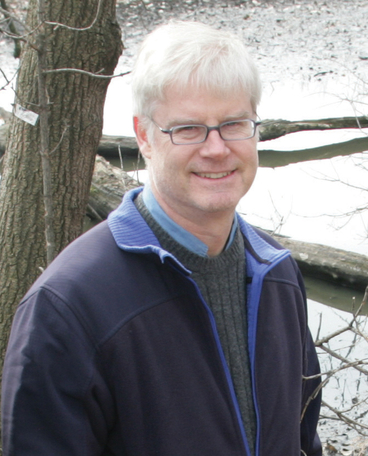
The 1.4 million lakes that grace the surface of our planet provide bountiful benefits to just about every human, whether as a source of freshwater or food, a resource for recreation, or simply a welcome window on nature’s beauty and complexity. But lakes everywhere are under threat – from climate change, chemical pollution, invasive species, and more.

To help ensure that lakes can thrive in the future, more than two dozen researchers from around the world, including Ecology, Evolution and Behavior professor James Cotner, spent the past year and a half taking a deep dive into the threats lakes face around the world and strategies for alleviating them.
Their report, published in March in Earth’s Future, analyzed data from LakeATLAS, a compilation of information on 1.4 million lakes and reservoirs around the world. In an innovative twist, it applies a human health lens to identifying problems, breaking them into seven major categories that parallel health challenges people experience: heat and circulation, dehydration, nutrition, respiration, metabolism, infection, and poisoning.
“Lakes are living systems that can suffer from a large variety of health issues, similar to humans,” the authors write. “By outlining their consequences for human well-being, we demonstrate the need for improved prevention and treatment strategies.”
The researchers found a wide range in health conditions among the lakes included in the atlas. Major ailments in each of the categories include:
Heat and circulation. Climate change and salt pollution are altering the way water circulates in lakes, and climate change is warming waters and reducing ice cover. These disruptions reduce lakes’ ability to support healthy ecosystems and human activities and exacerbating growth of microbes and invasive species.
Dehydration. “One of the biggest problems for lake health is that a lot of lakes are disappearing,” Cotner says. Loss of water due to human-induced changes in climate and land use increase salinity and pollutant concentrations in lakes and decrease availability of freshwater for wildlife and human uses.
Nutrition. Addition of nutrients to lakes from agriculture, wastewater and other sources is increasing growth of algae that compromise human and ecosystem health.
Respiration. Reduced concentrations of dissolved oxygen in lakes reduces their ability to support a diversity of life forms.
Metabolism. Unnatural changes in pH, salinity, and color due to air pollution, agriculture, deforestation and more affect the ability of fish and other aquatic life to thrive.
Infection. Biological pollutants introduced from wastewater and ballast water from ships unbalance lake ecosystems, threatening fish and other inhabitants.
Poisoning and other disturbances. Harmful substances include mercury, synthetic organic chemicals, and plastic trash. Overuse and changes in water flow are also problematic.
Just as the human health framework is useful for classifying and quantifying harms, the researchers note it can be handy as well for looking at how we can minimize lakes’ health issues and improve the likelihood freshwater ecosystems will be able to continue to support humans and ecosystems in the future.
Top priority, as with human health, is preventing problems before they arise. Additional strategies include regular screening to identify problems early on and treating problems that do emerge. Specific recommendations include mitigating climate change, improving wastewater treatment, educating people about lake health, using new technologies to detect problems, engaging local people to care for lakes, and implementing laws and policies to protect freshwater.
To Cotner, the human health framework is not just a useful way to categorize threats to lakes and potential solutions. It’s also a powerful reminder that the health of the environment has repercussions for human health, too — a lesson he tries to convey to his students, many of whom aspire to be health professionals.
“One of the things I’ve been preaching to students for a long, long time is the idea that EEB should be [what] a lot of our future physicians major in, because human health is not disconnected from the environment,” he says. “We need to start making those connections — not only how humans affect the environment, but also how those effects on the environment are impacting us.” — Mary Hoff